Understanding the Charging and Usage of a 300Ah Battery
When it comes to large-scale energy storage solutions, 300Ah batteries are often at the forefront of providing reliable and durable power. Whether you're using them for renewable energy systems, off-grid living, or heavy-duty applications like RVs or marine setups, understanding how to properly charge and use a 300Ah battery is crucial for maximizing performance and lifespan. In this comprehensive guide, we’ll explore all aspects of 300Ah battery usage, from understanding the basics to the best practices for charging, maintenance, and more.
For anyone using or considering a 300Ah battery, whether for residential, commercial, or recreational use, it’s important to understand how to properly integrate the battery into your power system. The right charging techniques and usage tips can greatly extend the life of your battery and ensure consistent performance. Let’s dive into everything you need to know about your 300Ah battery and how to maximize its benefits.
- What is a 300Ah Battery?
- How to Charge a 300Ah Battery Properly
- How to Use a 300Ah Battery Efficiently
- A Comprehensive Approach to Charging and Using a 300Ah Battery
What is a 300Ah Battery?
Understanding the Basics of a 300Ah Battery
A 300Ah battery refers to a battery with a capacity of 300 ampere-hours, meaning it can theoretically supply 300 amps of current for one hour, or 1 amp for 300 hours. This large capacity makes 300Ah batteries ideal for long-term energy storage and high-demand applications. 300Ah batteries are commonly used in deep-cycle applications, where the battery is regularly discharged and recharged.
These batteries are often lead-acid, lithium-ion, or AGM (Absorbent Glass Mat) types, each offering unique benefits depending on the application. Understanding the chemistry and characteristics of your 300Ah battery is essential for effective usage and charging.
Common Uses for a 300Ah Battery
The 300Ah battery is popular in several applications, including:
- Solar energy storage: Storing energy collected from solar panels to be used at night or during cloudy days.
- Off-grid systems: Powering homes or cabins that are not connected to the electrical grid.
- Electric vehicles (EVs): Used to power electric vehicles, including RVs, boats, and golf carts.
- Backup power systems: Providing power during outages for essential appliances.
>>See also What Sets Energizer Batteries Apart From Energizer Industrial Batteries
How to Charge a 300Ah Battery Properly
Why Proper Charging of a 300Ah Battery is Important
Charging your 300Ah battery correctly is crucial to maintain its lifespan and ensure reliable performance. Overcharging or undercharging can reduce the battery’s capacity and longevity. 300Ah batteries are designed to be charged with specific voltage and current levels, depending on the type of battery and its intended use.
1. Choose the Right Charger
It’s essential to use a charger that is compatible with your 300Ah battery. The charger should be able to provide the correct voltage and charging profile for the type of battery you’re using. For example, a lithium-ion 300Ah battery requires a different charging profile than a lead-acid or AGM battery. Always check the manufacturer’s recommendations for the best charger.
- For lithium-ion batteries: These batteries typically require a charger with a constant current and constant voltage (CC-CV) charging profile.
- For lead-acid batteries: Lead-acid batteries usually have a three-stage charging process: bulk, absorption, and float.
2. Set the Charging Voltage Correctly
For a 300Ah battery, the charging voltage should match the battery’s specifications. For instance, a 12V 300Ah battery typically needs a charging voltage of 14.4V to 14.8V, whereas a 24V battery may require 28.8V to 29.6V. Ensure that your charger can deliver this voltage range to avoid undercharging or overcharging the battery.
3. Charging Time and Current
Charging time depends on the current your charger can provide. A high-quality charger can charge a 300Ah battery more quickly, but it’s important to follow the charging recommendations provided by the manufacturer. A typical charging current might range from 0.1C to 0.3C (where C is the capacity of the battery). For a 300Ah battery, this would mean a current of 30 to 90 amps, depending on the desired charging time.
Charge Cycles and Battery Maintenance
Properly maintaining a 300Ah battery involves regularly charging the battery to prevent deep discharges. While lithium-ion batteries can tolerate deeper discharges compared to lead-acid or AGM batteries, it's still advisable to keep the charge level above 20% to maximize battery life.
4. Monitor the Charging Process
While charging a 300Ah battery, always monitor the battery’s temperature and voltage. Overheating can occur if the charging current is too high or if the battery is in poor condition. Ensure that the charging process occurs in a well-ventilated space, especially for lead-acid batteries, which release hydrogen gas during charging.
Common Charging Mistakes to Avoid
- Overcharging: Overcharging can cause excess heat, leading to battery damage. Always use a charger with built-in overcharge protection.
- Undercharging: Undercharging can reduce the overall performance of the battery and lead to sulfation in lead-acid batteries.
- Incorrect voltage settings: Using the wrong voltage setting for the battery type can shorten the battery’s lifespan.
How to Use a 300Ah Battery Efficiently
Maximizing the Efficiency of Your 300Ah Battery
To make the most out of your 300Ah battery, it’s essential to understand how to use it efficiently. For off-grid or renewable energy applications, this means managing the load and ensuring the battery is neither overcharged nor excessively discharged.
1. Use Power-Efficient Devices
If you’re powering a home or system with a 300Ah battery, it’s important to use energy-efficient appliances to prevent excessive draw from the battery. LED lights, Energy Star-rated appliances, and efficient heating and cooling systems can reduce power consumption and help extend the battery’s usage time.
2. Monitor Battery Usage
For systems like solar power or off-grid living, tracking how much power your 300Ah battery is providing and how much power is being used is essential. A battery monitor can help you keep track of both the charge and the discharge cycles, allowing you to optimize energy use.
3. Avoid Deep Discharges
While 300Ah batteries can handle deep discharges, frequent deep discharges can lead to capacity degradation. For lead-acid batteries, discharging below 50% can shorten the lifespan, while lithium-ion batteries tend to have a higher tolerance. It’s best practice to recharge the battery when it reaches around 30% to 40% of its capacity.
Using Multiple 300Ah Batteries Together
For larger systems that require more power, you may need to connect multiple 300Ah batteries in parallel or series. This can be done to increase capacity or voltage depending on your system requirements.
- In parallel: Connecting batteries in parallel increases the total capacity but keeps the voltage the same. For example, two 300Ah batteries connected in parallel will give you 600Ah of capacity at the same voltage.
- In series: Connecting batteries in series increases the voltage but keeps the capacity the same. For instance, two 300Ah 12V batteries connected in series will provide 24V with 300Ah of capacity.
Common Issues When Using a 300Ah Battery
1. Battery Voltage Drop
If you notice that the voltage of your 300Ah battery drops more quickly than expected, this could indicate issues like battery degradation, improper charging, or excessive loads. It's important to regularly check the voltage levels to ensure they are within the normal operating range.
2. High Temperature
High temperatures can lead to battery inefficiency and damage, especially for lead-acid batteries. Ensure that the 300Ah battery is kept in a cool, dry place to minimize heat buildup during use.
>>See also How To Switch From A Lithium-Ion Battery To A LiFePO4 Battery
A Comprehensive Approach to Charging and Using a 300Ah Battery
In conclusion, understanding the proper charging and usage techniques for a 300Ah battery is key to maximizing its efficiency and lifespan. Whether you’re using the battery for off-grid systems, renewable energy storage, or heavy-duty applications, following the correct charging protocols and usage guidelines will ensure that you get the most out of your investment.
Remember, the key to maintaining a 300Ah battery is regular monitoring and proper maintenance. By using a suitable charger, avoiding overcharging, and implementing energy-efficient practices, you’ll be able to keep your 300Ah battery running smoothly for years to come.
Whether you’re new to large-capacity batteries or a seasoned user, this comprehensive guide should give you the knowledge needed to get the best performance from your 300Ah battery. Always consult the manufacturer’s specifications and seek professional advice if you're unsure about any aspects of usage or charging.

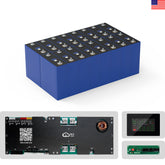

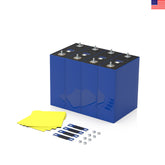
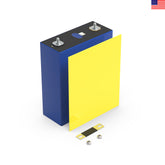
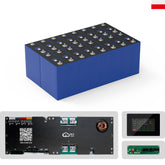

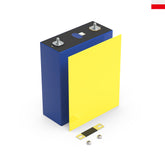

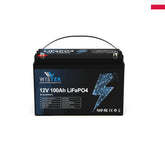
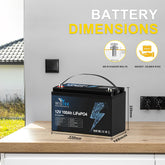
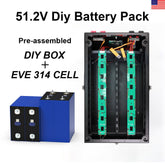

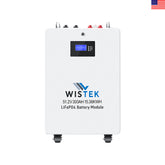
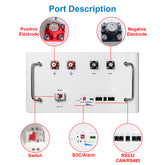
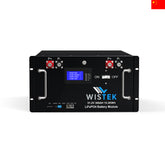
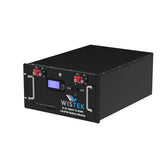


Leave a comment
All blog comments are checked prior to publishing